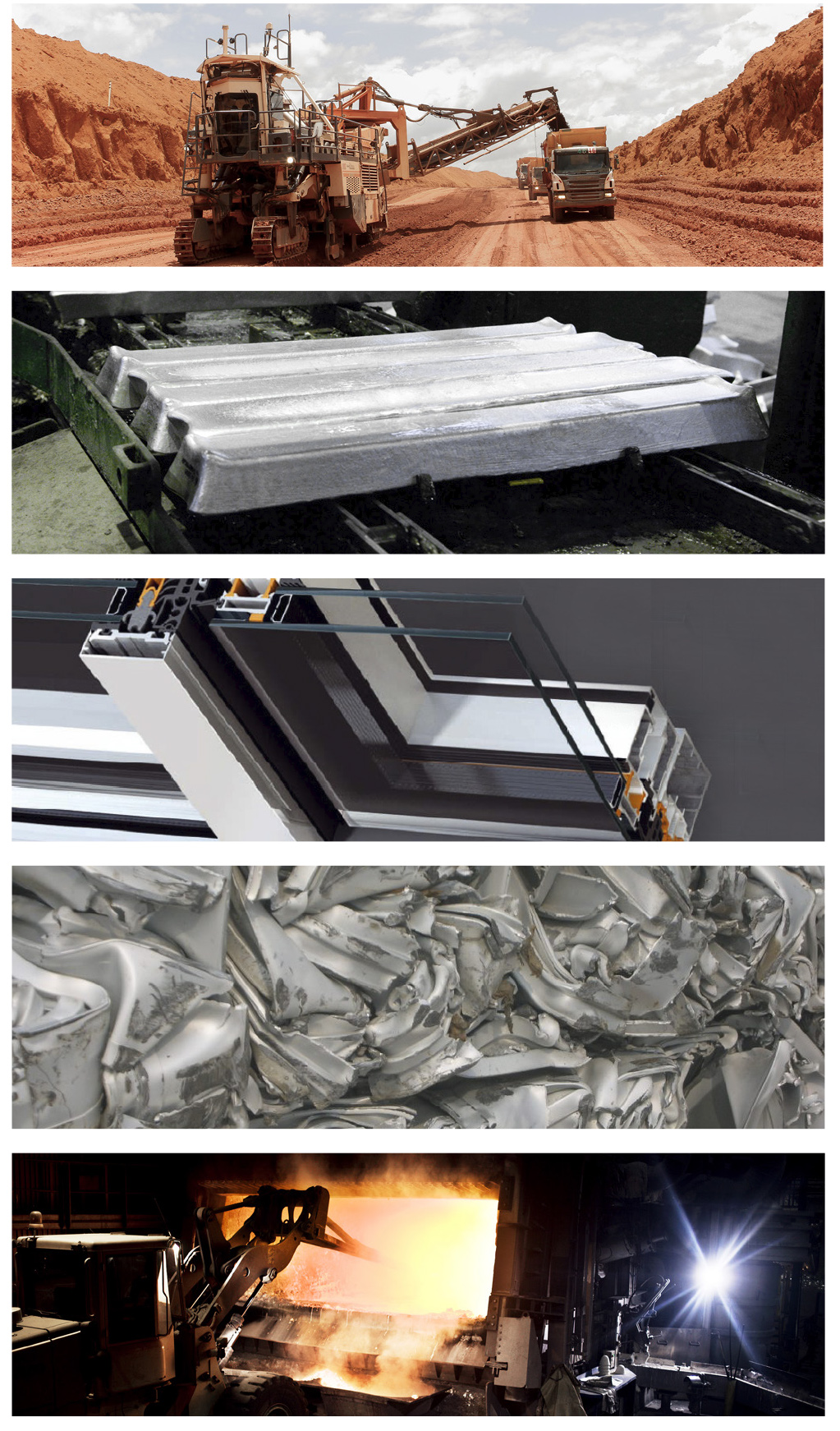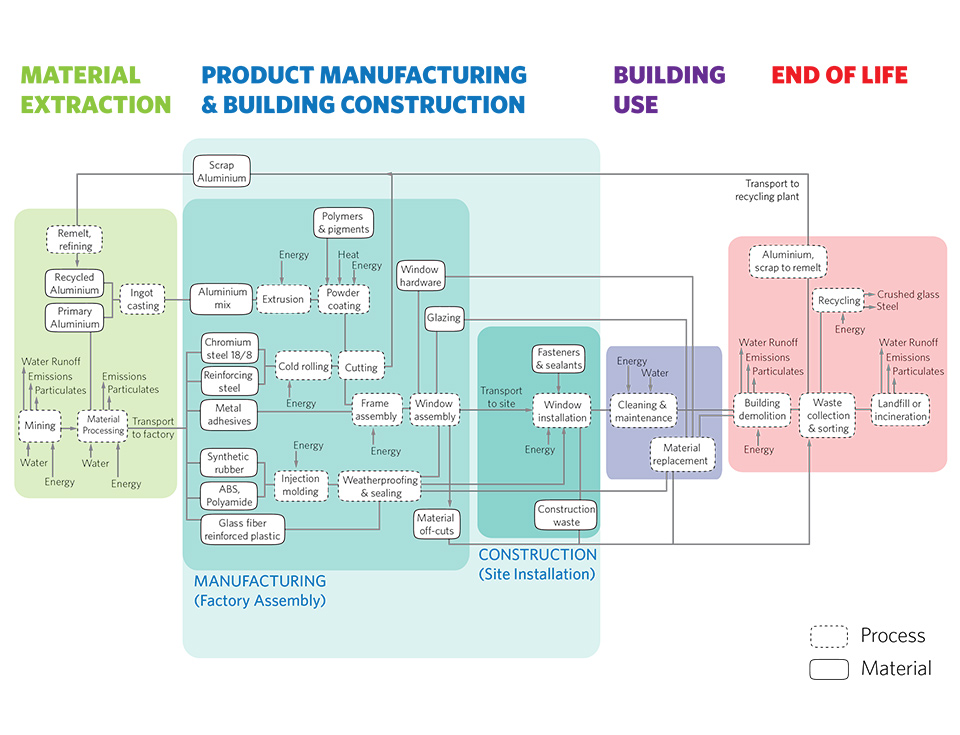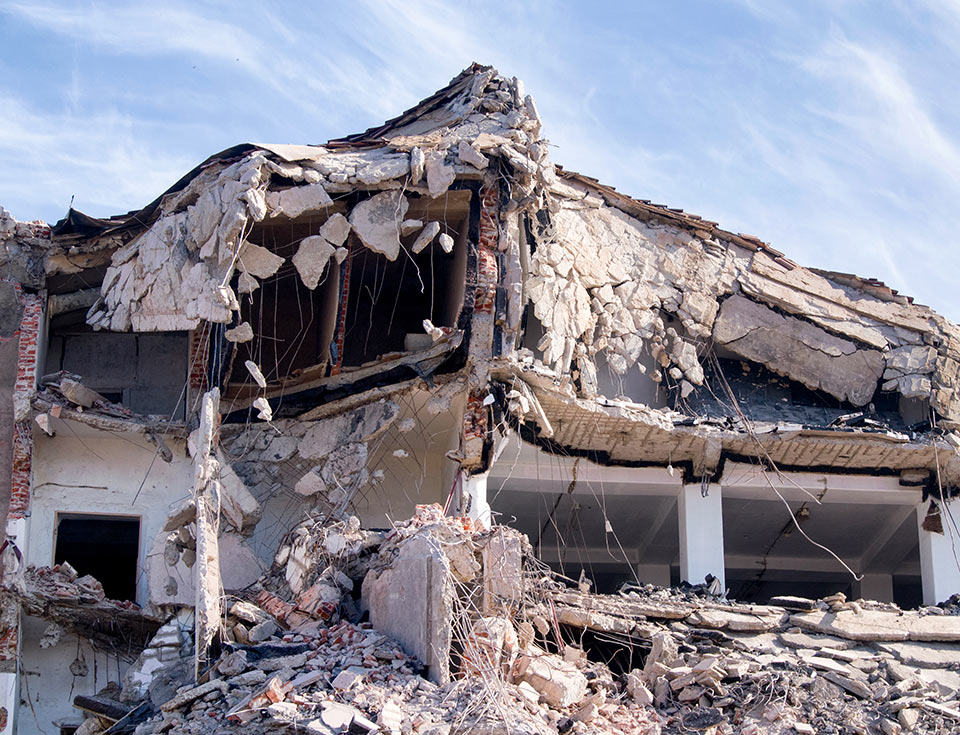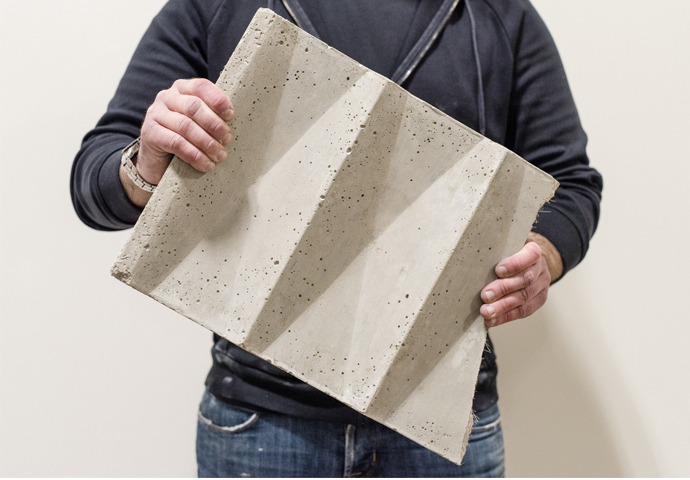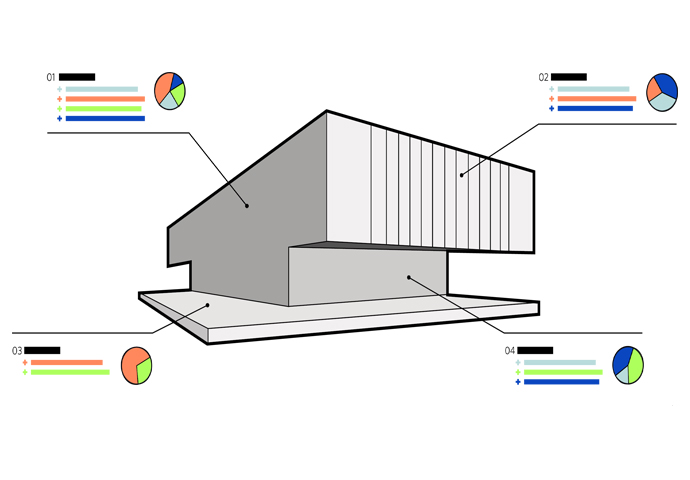How can architects, engineers, and manufacturers decrease the carbon footprint of aluminum and other critical metals across a building's life cycle?
Architects have the potential to significantly impact the battle against climate change—the US Green Building Council reports that the building sector accounts for 39% of the United States' carbon emissions, more than any other individual sector. As architects and engineers investigate more sustainable methods, practices, and materials, aluminum and other metals are beginning to emerge as the potential building blocks of more sustainable cities.
Life cycle stages for aluminum include mining, manufacturing into billets, use in buildings, reclamation, and re-melt.
Aluminum is not only durable, flexible, light, efficient, and low-cost, it's also recyclable. Despite these many advantages, there is little research that quantifies this material's potential contribution towards more sustainable buildings. That's why KieranTimberlake collaborated with Michael Stacey Architects, the University of Nottingham's Architecture Tectonics Research Group (ATRG), and the International Aluminum Institute (IAI) on a multi-year research project that measures the benefits of aluminum in the built environment.
Towards Sustainable Cities
Called Towards Sustainable Cities, the project is structured as a series of studies on the primary benefits of aluminum's use in architecture—durability, recyclability, flexibility, lightness, efficiency, and economy. The first of the project's three reports, Aluminium and Durability, highlights case studies of buildings that pioneered aluminum's use and examines the service and overall life expectancy for aluminum building components. The second report, Aluminium Recyclability and Recycling, documents building demolition protocols including the collection, reuse, and recycling of building materials and components.
KieranTimberlake was primarily responsible for the third report in the series, Aluminium and Life Cycle Thinking. Our expertise in the realm of carbon accounting, Life Cycle Assessment, construction and fabrication, and quantitative modeling gave us unique insight into the embodied environmental impacts of aluminum over its full life cycle. These impacts are defined as the emissions and other impacts aluminum generates over the course of its entire life, from the energy it takes to extract the raw materials used in its manufacturing to the manufacturing itself and its installation, use, maintenance, and eventual demolition and disposal.
This diagram charts out the typical life cycle stages for a single building element, in this case an aluminum window framing. Click on the image to see more.
Life Cycle Analysis
Life cycle thinking encourages the actors involved in the built environment—manufacturers, architects, engineers, contractors, and building owners—to be mindful of the history of any manufactured product. To quantify these impacts, we use a modeling method known as Life Cycle Assessment (LCA). In Aluminium and Life Cycle Thinking, we used LCA models to qualify and test aluminum's potential benefits. These models are also used to investigate what strategies and processes can significantly reduce the embodied carbon in construction materials, with a focus on issues surrounding the accurate representation of aluminum and other highly recyclable materials in current LCA databases and models.
Perhaps most importantly, the LCA models created and interpreted in our report support “if–then” investigations: If we use aluminum instead of plastic window frames, then what will our building's overall impact look like? If we use highly recyclable materials, can we then offset the impacts of a more affordable but less sustainable building material?
By planning for eventual demolition during design, architects can set up the future reclamation and reuse of nearly all of a building's aluminum components, resulting in a dramatic reduction in the embodied carbon.
The study showed that architects can have a meaningful impact in reducing the embodied carbon of their projects when they look closely at the sourcing and manufacturing of building materials. In the case of aluminum, we show that the most impactful decision an architect can make is to focus on detailing that extends the useable life and the recyclability of aluminum products. Additionally, sourcing metals that have been manufactured in countries or regions with low-carbon electricity grids is critical to immediately decreasing global carbon emissions and a building's specific contribution to climate change. In this way, the study seeks to change the ways in which designers consider building materials, allowing us to ask new and deeper questions about our role in global supply chains and climate change.
To learn more, download the full report below.
Additional Publications
This project has been shared via the following peer-reviewed publications:
- "The influence of durability and recycling on life cycle impacts of window frame assemblies" by Stephanie Carlisle and Efrie Friedlander, The International Journal of Life Cycle Assessment
- "Getting Beyond Energy: Environmental Impacts, Building Materials, and Climate Change" by Stephanie Carlisle, Embodied Energy and Design: Making Architecture Between Metrics and Narratives




